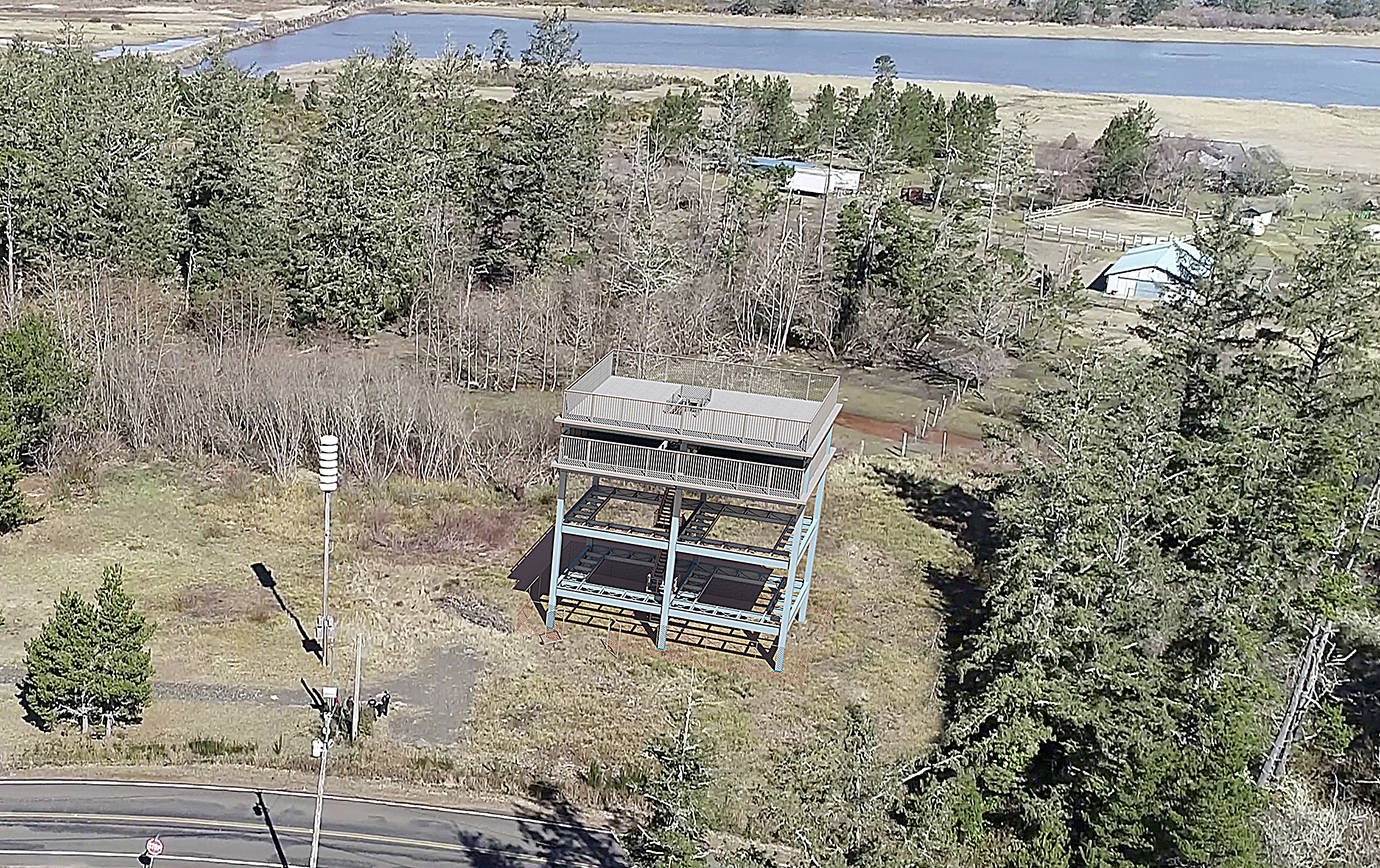With a lot of hard work by the Shoalwater Bay Tribe, a vertical tsunami evacuation tower near Tokeland should be ready for “the big one” by the end of October 2020.
Shoalwater Bay emergency management director Lee Shipman said none of it would have been possible without a core group of driven individuals, particularly previous emergency managers like Dave Nelson and George Crawford.
“We wouldn’t have gotten the (grant) application done without their expertise,” said Shipman. “We are all passionate; we’re kind of like a tsunami evacuation tower gang.”
Nelson and Crawford were instrumental in forming the tribe’s emergency management plans. There are two tsunami warning sirens on the reservation; the one on the north end is named George, after Crawford; the one at the south end – off Blackberry Lane, next to where the evacuation tower will stand – is named Dave, after Nelson.
The grant is a $2.2 million FEMA pre-disaster mitigation grant, a highly competitive grant with limited resources that covers projects around the country.
The FEMA money, plus another $1 million kicked in by the tribe, will cover the construction of the tower from start to finish. When complete, it will be one of two tsunami evacuation structures in the nation, the other atop the gym at the Ocosta Elementary School about 10 miles north.
Shortly after the announcement of the grant award, during the tribe’s annual Yellow Brick Road Tsunami/Health Walk last July, crews from the state Department of Natural Resources were already at the site, looking at the seismic characteristics of the soil and the groundwater underneath. The results of their tests were passed on to the tribe and engineers to incorporate into the tower’s design.
The Shoalwater Bay Tribe has signed contracts for design and engineering for the tower, said Shipman. The design work is being done by Degenkolb Engineering, added Shipman. The latest renderings of the tower and its location were just completed by the State Department of Transportation’s Visual Engineering Resource Group.
As of late April the tribe had been taking in proposals from potential project managers for the tower. Shipman was hoping to have one on board by the early part of May. Once that person is in place, the tribe can send out an RFQ — a request for quote — for construction, and the permitting process can begin, said Shipman.
The tribe’s draft schedule for the project shows the initial tasks of tsunami modeling and geotechnical investigations should be wrapped up by June. The design and peer review periods run through August, and the permitting process will hopefully be completed by the end of September, with bidding for construction wrapping up by the end of October 2019. The construction itself is expected to run from November 2019 to mid-summer of 2020, with a project completion date listed as October 2020.
When it’s done, the tower will stand some 50 feet tall or more and hold 486 people.
The Shoalwater Bay tribe has 70 official members, said Shipman, with a total reservation population of around 120. That leaves room for tribal neighbors and, as is customary for the tribe, nobody will be turned away in the event of a tsunami.
“You won’t have to take a number,” she said, adding it is the attitude carried by the tribe that it’s as important to help its neighbors as its own.
To that end, Shipman has been happily sharing the tribe’s successful grant application with other communities seeking their own towers, including Ocean Shores, Westport and Aberdeen. If the tribe’s success can make people along the coast and beyond safer in the event of a tsunami, so much the better, she said.
Shipman said the tower may be equipped with some sort of solar power panels, primarily to be used to provide for communications in the event of a long-term event.
The tower will also have a stock of emergency supplies, said Shipman. She said that could push the total cost of the entire project, start to finish, to close to $4 million.
The tower is the latest in the tribe’s attempts to provide refuge from a tsunami for its members and neighbors. Just up the road from the tower site, north of the intersection of Tokeland Road and State Route 105, is Eagle Hill Road.
Shipman said Tokeland is fortunate to have the nearby high ground, north of the Shoalwater Bay Casino, but for a time there was no path to reach it. To that end the Shoalwaters traded some timber to have a road built up the hill. But that wasn’t the end of it.
“We have a 40-foot container up there filled with supplies,” said Shipman. She reckons 500 people could survive for two weeks on what is currently at the top of the evacuation route. And again, nobody will be turned away. Whether it’s 500 or 2,000 refuge-seekers, no matter where they come from, the tribe will encourage cooperation among all evacuees to make sure as many people survive as possible.


